Green cars: five very strange eco-friendly cars
The fact that the internal combustion engine causes irreparable harm to the environment began to be talked about back in the 1960s, when the megacities of America and Japan began to literally suffocate from smog. The first legislative acts to reduce toxic emissions in new cars were not long in coming. Already in 1970, the States passed a law obliging manufacturers not only to equalize, but even reduce the content of toxic components in the exhaust gases of internal combustion engines of cars. Emissions levels for 1975 model year cars were to be on average half that of 1960 cars: 87% CH, 82% CO, and 24% NOx. Similar requirements were soon legalized in Japan and Europe. In America, this led to a bright sunset, but in the rest of the world, compact cars and small cars began to multiply like mushrooms after rain. As for the direct competitors of internal combustion engines, engines running on alternative fuels, no one took them seriously at that time.
No, oil corporations bought up the most outstanding projects, but only in order to hide them in a safe - from sin. The people looked at the inventors of "green" cars as if they were crazy. And who else could have thought of improving a design that already works well? Moreover, no driving electric car would ever compare with the Chevrolet Impala in beauty, power, or speed. And with a power reserve, electric vehicles are still in trouble, even when global auto brands have finally adopted them. And yet, over the past decade and a half, this type of transport has evolved by an order of magnitude, which could not but affect our selection. Ridiculous, multifunctional, transforming and even racing "green cars" are waiting for you, dear reader. Enjoy!
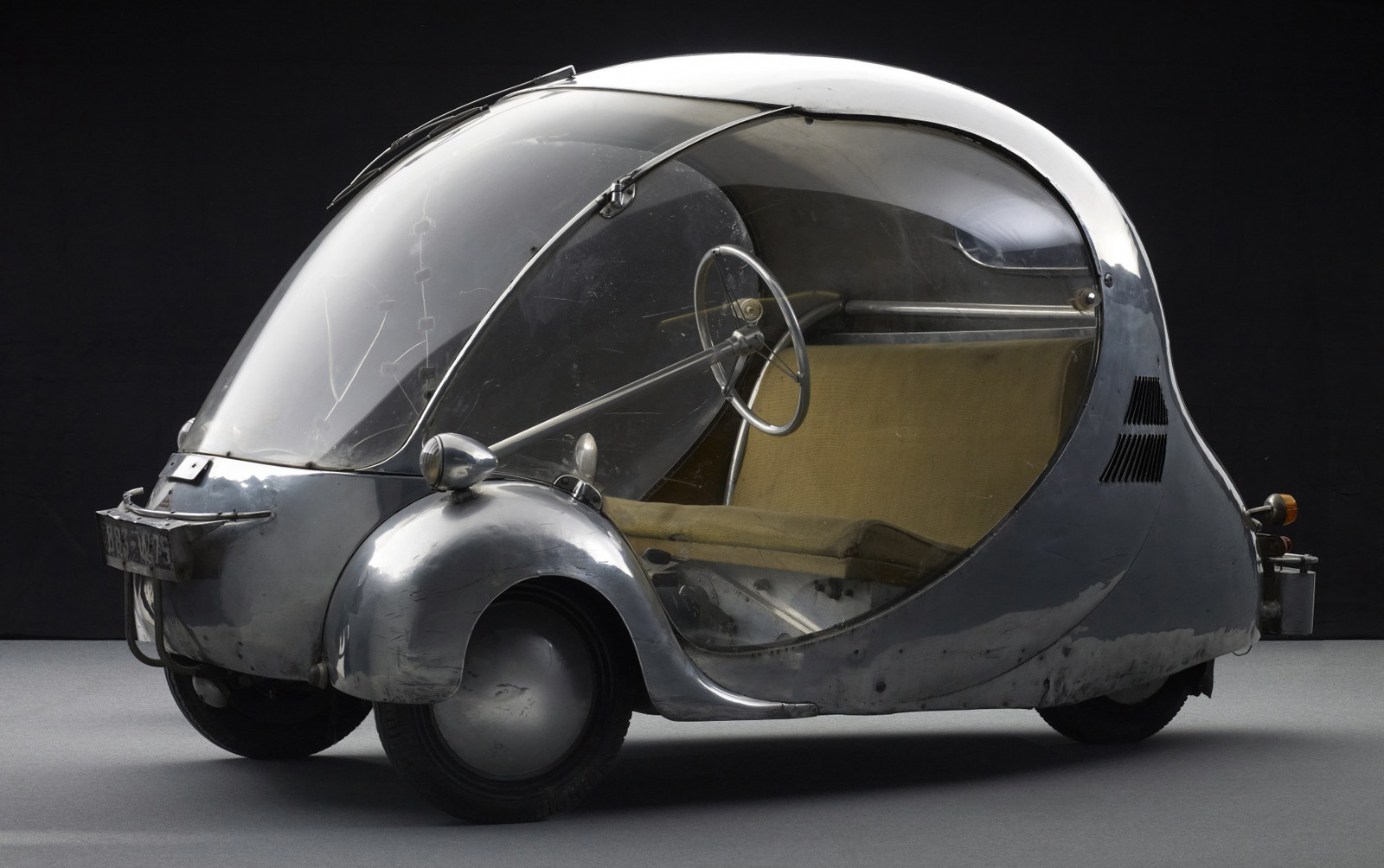
Alternative for "frogs"
Most engineers who have received a patent for an electric motor insist on their pioneering status. By the way, this one appeared a little earlier than the internal combustion engine, but due to its inefficiency and imperfection, it did not develop as rapidly as its competitor. The French showed considerable ingenuity in the matter of electric cars before others. This does not surprise me at all: since Gustave Eiffel erected his strange tower in Paris, his people, with amazing tenacity, began to produce apparatus for the automobile cabinet of curiosities. And each time it had some reason.
 |
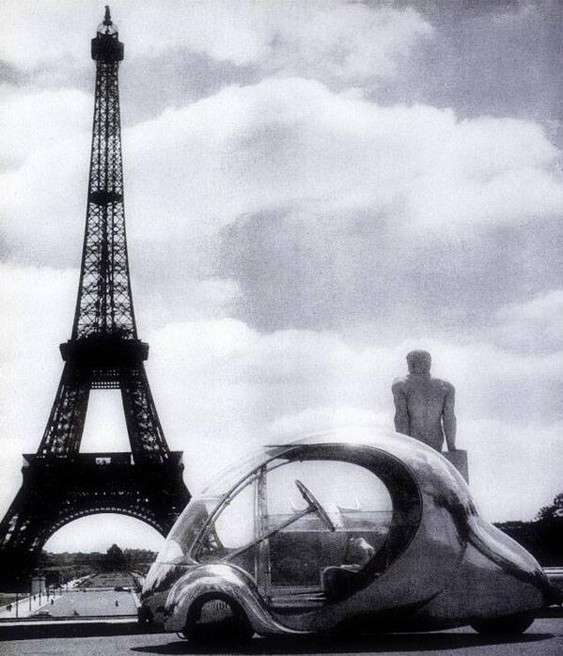 |
For example, in 1942, in Paris, occupied by the Germans, gasoline was not released to private individuals. To move around the city, crowded with military equipment, automotive designer and engineer Paul Arzens made something called L'Oeuf, or "Egg". This single-seat microcar was made with humor and even irony, but behind the deliberate naivete of its forms was a design thought out to the smallest detail. The hand-molded aluminum body was light enough to be pulled by one person. And its rounded shape had enough aerodynamics to allow the "Egg" to accelerate to 60 km / h! The electric motor with a power reserve of 96.5 km was driven by a single rear wheel. In addition, Monsieur Arzens used plexiglass for his microcar. This material only appeared in France and was not used by designers in the automotive industry. Doors and a windshield were curved from it at L'Oeuf.
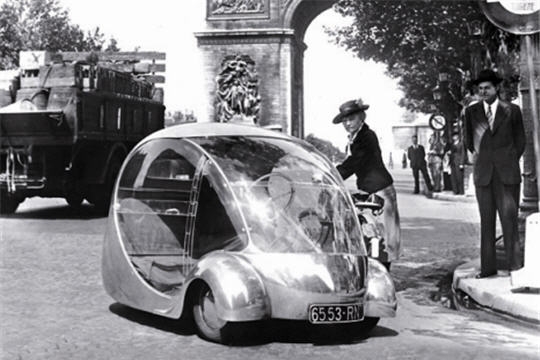 |
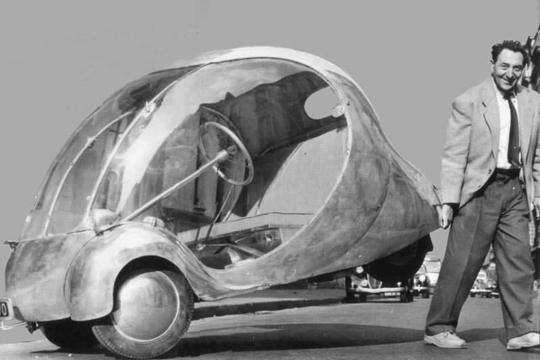 |
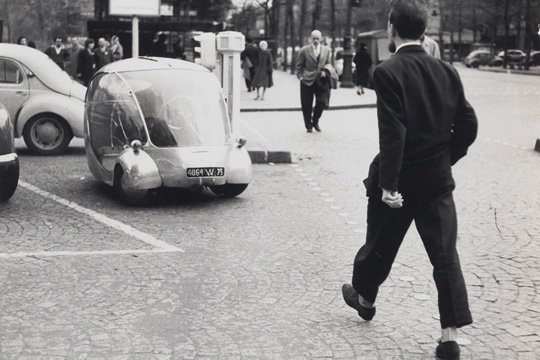 |
Another "entertainment" of French engineers during the occupation was an electric car from the notorious Peugeot brand. The machine with the index VLV (fr. Voiture Légère de Ville, "Light city car"), was released in 1942. This variant had a more traditional chassis structure, but still looked comical. Four 12-volt batteries allowed him to drive up to 80 km, while the “maximum speed” was 36 km / h. Unlike L'Oeuf, the Peugeot electric car seemed to have a bright future - even in conditions of severe shortages, the model was in demand (377 copies left the assembly line). It was mainly used for postal needs. But even in this, the Nazis saw an act of defiance, soon banning the release of VLV. But not a drop of gasoline was spent on the project!
Peculiarities:
The French have long had a love for hypertrophied roundness, demonstrating it wherever possible - even in art, even in mechanical engineering. In their opinion, even a stone launched by a skilled hand has aerodynamic characteristics. So the appearance of the world's first electric car in small-scale circulation happened in France - this is a pattern. And he had to look no other way than in the form of an egg. Maybe that's why the electric car caused rejection in everyone for a long time?
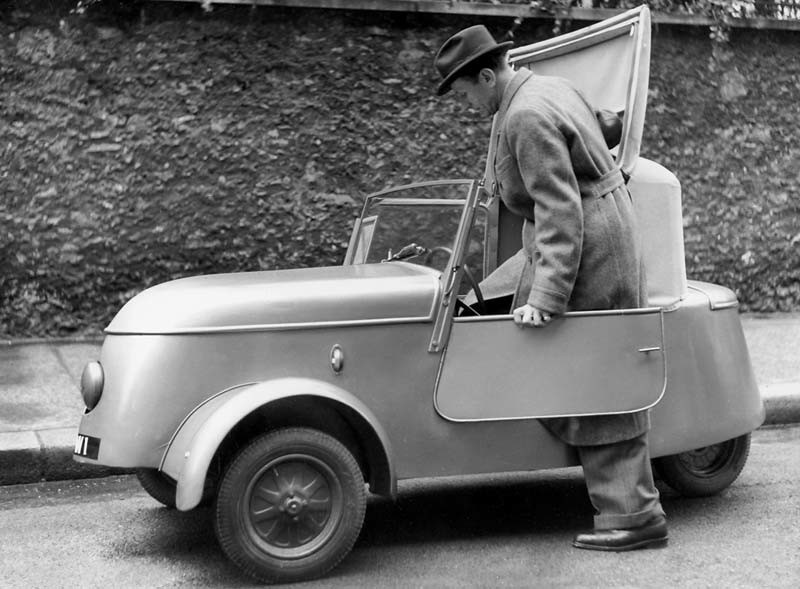 |
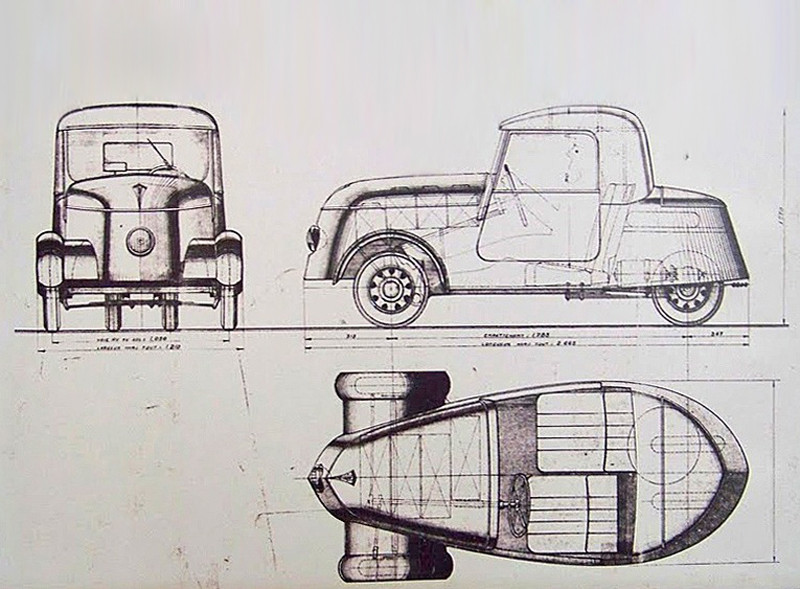 |
1 / 4
2 / 4
At first glance, the Peugeot VLV seems to be suffering from a shortage of wheels. Not at all, there are four of them, just the rear pair has a different front track (270x90) ...
3 / 4
At first glance, the Peugeot VLV seems to be suffering from a shortage of wheels. Not at all, there are four of them, just the rear pair has a different front track (270x90) ...
4 / 4
At first glance, the Peugeot VLV seems to be suffering from a shortage of wheels. Not at all, there are four of them, just the rear pair has a different front track (270x90) ...
Multitasking eclecticism
Without knowing it, the Parisian engineers created a trend that other electric car creators have followed for more than half a century. Bubbles of various shapes and sizes left the assembly shops of corporations such as AMC, GM, Toyota, Fiat and even Volvo. There were few fundamental differences among them, but there were significant similarities. Due to heavy and inefficient batteries, they all had low speed, lack of any comfort and a short range. All this did not put a fat cross on the career of an electric car, however, it slowed down its development until the new century.
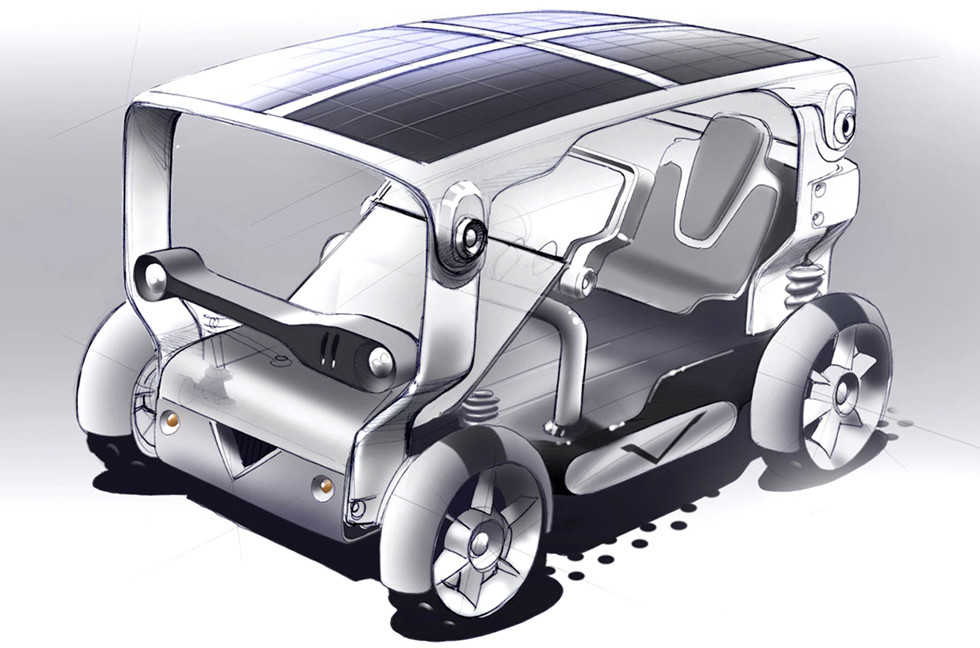
In the years of the 2000s, global urbanization forced manufacturers to turn again to the idea of an eco-friendly urban compact. And the French were again among the first to show originality in this matter. Some formation Venturi Electric began their experiments with batteries back in 2002, creating the world's first electric sports car. By 2007, the engineers had a whole bunch of environmentally friendly concepts, the most surprising of which was the Eclectic Concept.
1 / 6
2 / 6
"Green car" Eclectic Concept in all the splendor of its "dysfunctions"! But they planned to produce a circulation of 3 thousand copies a year!
3 / 6
"Green car" Eclectic Concept in all the splendor of its "dysfunctions"! But they planned to produce a circulation of 3 thousand copies a year!
4 / 6
"Green car" Eclectic Concept in all the splendor of its "dysfunctions"! But they planned to produce a circulation of 3 thousand copies a year!
5 / 6
"Green car" Eclectic Concept in all the splendor of its "dysfunctions"! But they planned to produce a circulation of 3 thousand copies a year!
6 / 6
"Green car" Eclectic Concept in all the splendor of its "dysfunctions"! But they planned to produce a circulation of 3 thousand copies a year!
According to designer Sasha Lakich, the look of his "Eclectic" is inspired by the outstanding cars of the past. And this, no less, is a lunar rover, Mini Moke and Mehari. But unlike its "predecessors", the Eclectic Concept was marked by not one, but three advantages at once: it draws energy from the air, the sun and electricity. So, the solar battery, which occupies the area of its entire roof (2.5 m²), has a power of 300 watts. This is enough to cover 9 km of track.
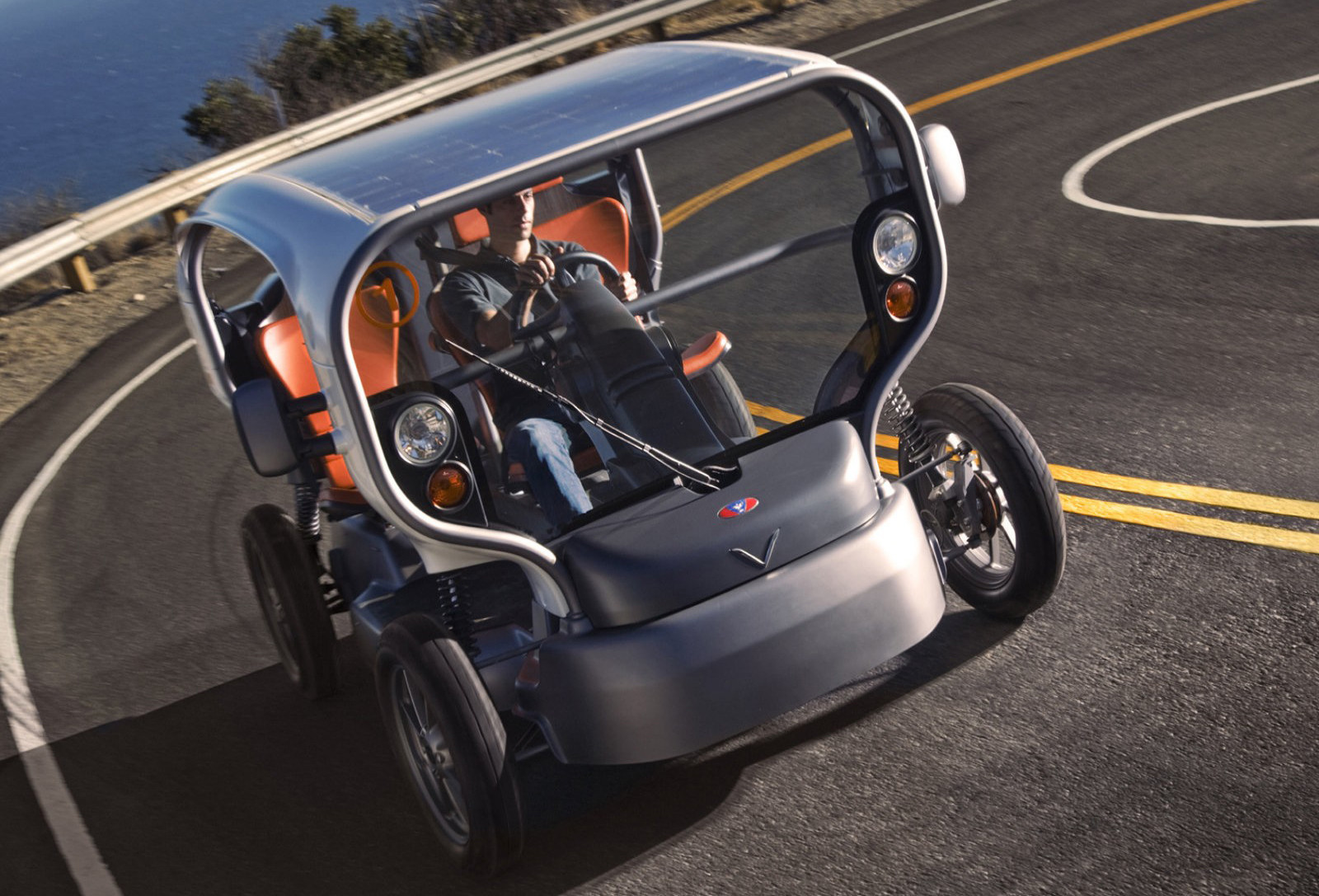
The assembled wind generator helps this "green car" to overcome another 15 km. And the main power plant, that is, an asynchronous electric motor with a power of 11 kW with a torque of 45 Nm, is enough to drive a 400-kilogram “carcass” 50 km forward. Metal-hydride batteries with a capacity of 9 kWh help him in this. As a result, the total length of the path that the Eclectic Concept can overcome, using all its reserves, is 74 km. Such a walk is certainly not a long one, but it was enough for the jury at the Mondial de l’Automobile to award Eclectic with the prize “Best Innovation of the Year”.
Peculiarities:
I do not argue that at the presentation of the Eclectic Concept, lovers of "green" technologies experienced a triple orgasm from the abundance of fetishes that this "cart" is stuffed with. Only they hardly justify the indicator of a miserable 70 kilometers, which Eclectic by hook or by crook overcomes in a painful 1.5 hours. Let’s say that it’s enough to crawl to the dacha right next to it (if it’s not far from the city), and you’ll have to stomp your feet to the store or wait five hours until the miracle batteries are charged from a simple outlet. Although we don’t have the Eclectic Concept, the manufacturer plans to supply its “cars” only to southern resorts, where it’s always sunny, windy and people have nowhere to rush…
1 / 6
2 / 6
In city traffic, Eclectic looks cheerful, although its “maximum speed” is only 50 km / h. But the manufacturer does not lose heart
3 / 6
In city traffic, Eclectic looks cheerful, although its “maximum speed” is only 50 km / h. But the manufacturer does not lose heart
4 / 6
In city traffic, Eclectic looks cheerful, although its “maximum speed” is only 50 km / h. But the manufacturer does not lose heart
5 / 6
6 / 6
Having finalized the concept to version 2.0, the dealers at Venturi Electric decided that $20,000 was an acceptable price for their weak offspring.
Torque… heads
Japan is a strange land, alien to my perception. The honor of the samurai, feudal civil strife - still all right, but modern culture, and the folklore of this state again and again drive me into a stupor. If we talk about auto brands, then they are all children of their country, but Nissan is definitely its most colorful representative. Even in the models sold, this brand strives to make a Pokemon face (one Juke SUV is worth something), and when it comes to environmentally friendly transport, the spirits of the ancestors themselves told them not to hold back ... So the new concept presented at the 2005 Tokyo Motor Show was made in accordance with the traditions established within the walls of this manufacturer.
1 / 3
2 / 3
The debut version of Pivo could only turn its head and whisper spells from its smart media system.
3 / 3
The debut version of Pivo could only turn its head and whisper spells from its smart media system.
But this electric car stands out among the army of brothers not only in appearance. The round-faced Nissan Pivo (from the English pivot - “rotate”) is also stupidly technological. First of all, a car of this type finally has a decent power reserve - more than 100 km. Disc electric motors with built-in current inverters are made so compact that they fit in Pivo hubs, and, as if by magic, the “green car” has found all-wheel drive. The concept is powered by 24 lithium-ion batteries, a successful collaboration between Nissan and NEC. Both companies claim that these batteries will last for 100,000 kilometers or five years of operation. In addition, the machine lives up to its name with a 360º rotating cabin and electric wheels that can turn them around the vertical axis, i.e. park Pivo sideways! Also, the concept chassis is equipped with movable levers that eliminate longitudinal body roll: when accelerating, they move the wheels back, and when braking, they move forward.
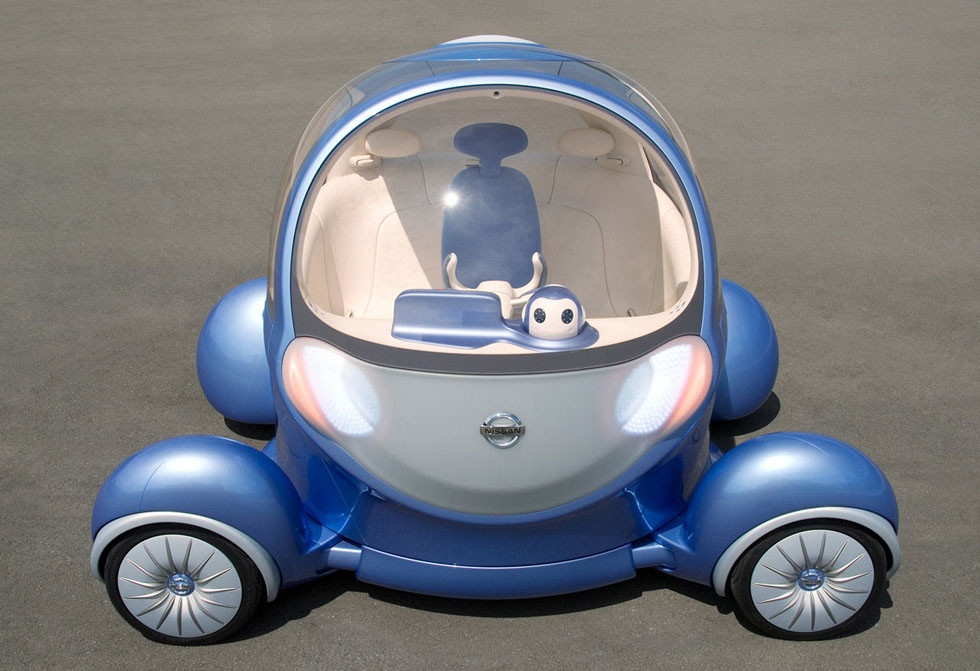 |
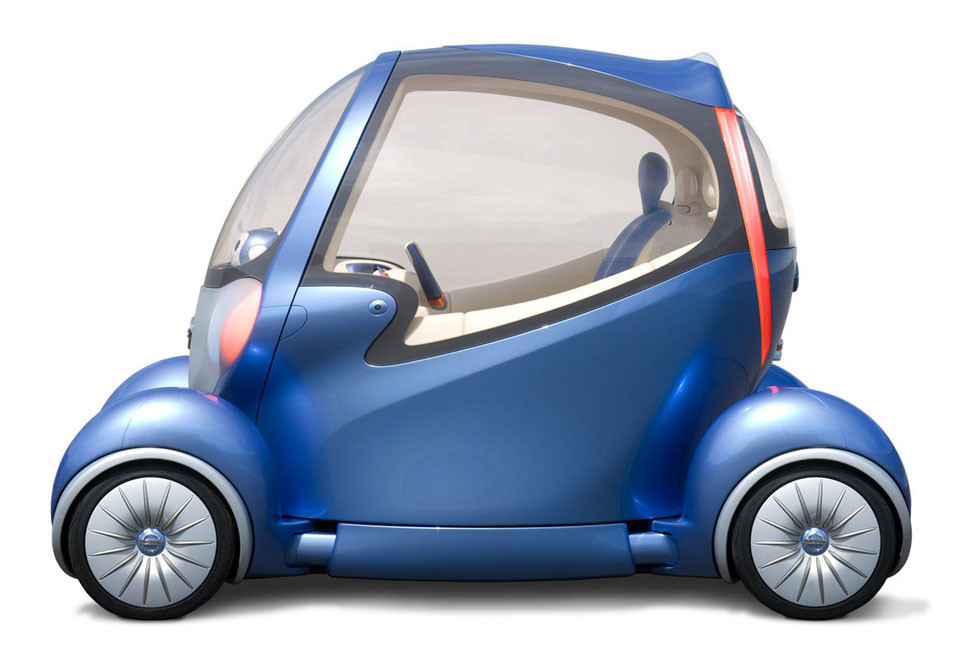 |
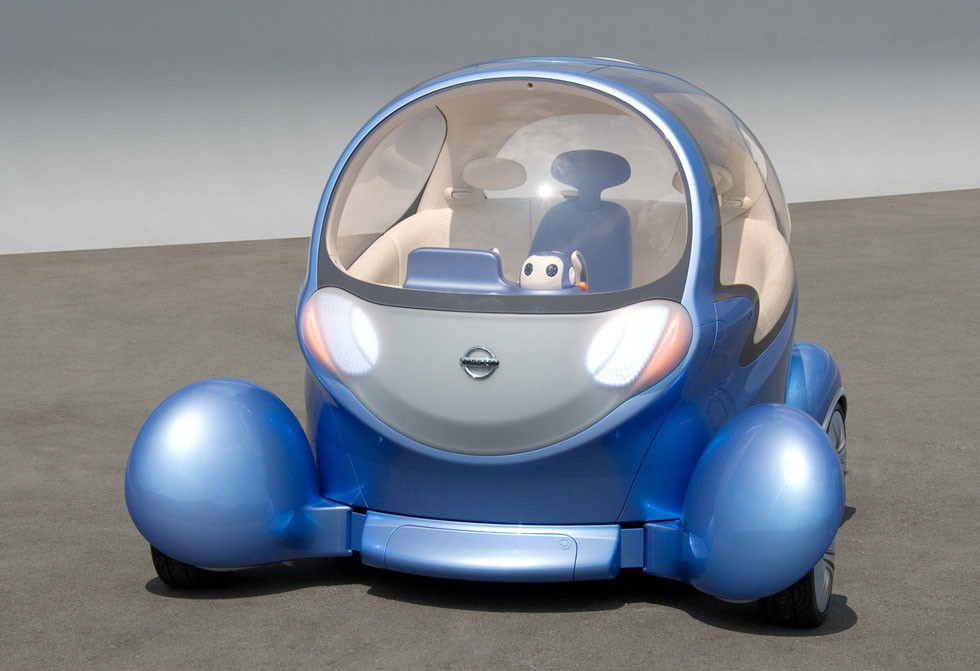 |
The three-seater cab will please its “rider” with panoramic windows, a surround view monitor and a navigation system that recognizes sign language. Soft and pleasant to the touch upholstery materials are designed to reassure the driver, and if this process drags on, a tadpole robot integrated into the dashboard comes into play. With the help of television cameras, he is able to determine the mood of a person by his facial expression, in order to then cheer up, cheer up or calm down. In a word, not a car, but the dream of every fan of manga and Japanese video games.
Peculiarities:
I didn't think I'd say this about Nissan products, but looks can be deceiving. Behind the stupid shell of a cartoon is a high-tech device that can solve the problem of parking and accidents. I am sure that if such a thing appeared in everyday life, the Japanese would instantly rivet a dozen or two mobile applications to it that would simulate riding in a tank / bathyscaphe / space sloop. But it's still possible, because as Carlos Ghosn, head of the Renault / Nissan alliance (yes, the French were noted here too!) said at the presentation of this concept: "The automotive industry is entering an era of unprecedented change." Now take it how you want...
1 / 5
2 / 5
But the pumped version of Pivo is famous for everything else, including the cabin door a la BMW Isetta
3 / 5
But the pumped version of Pivo is famous for everything else, including the cabin door a la BMW Isetta
4 / 5
But the pumped version of Pivo is famous for everything else, including the cabin door a la BMW Isetta
5 / 5
But the pumped version of Pivo is famous for everything else, including the cabin door a la BMW Isetta
worm apple
I don’t know what inspired the designers to create the next green car, but its body resembles a worm-eaten apple. Perhaps the discordant rows of portholes of various sizes are an encrypted message to the Masonic lodge? Or is it revenge on all the grandmothers of the world who fed their grandchildren with spoiled fruit? Or maybe the head of Motor Development International is crazy about Swiss cheese? It is difficult to find an answer to all these questions, but personally I think that in this way the authors of the Airpod microcar tried to reduce the weight of its body.
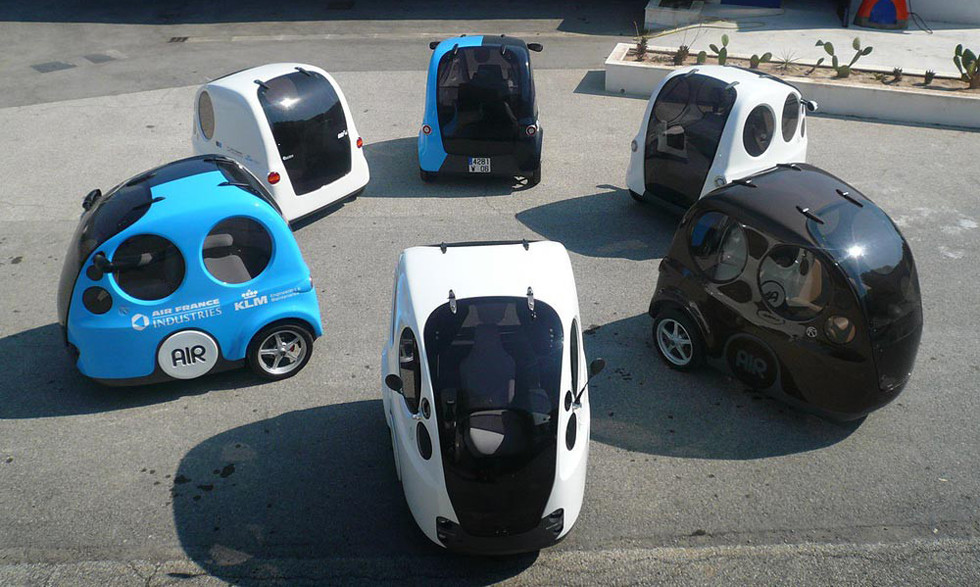
Is it critical? Still, after all, an equipped little car weighs only 220 kg, while 80 kg falls on air cylinders. And why the hell did they surrender to him? It's hard to believe, but the Airpod uses compressed air as ... fuel! The pneumatic motor consumes a minimum of energy and is able to accelerate the machine up to 70 km / h. One cylinder filled with air is enough for 200 km of travel, while the "pneumatic car" is able to pull another 300 kg of cargo. The process of charging it is extremely simple and takes only a couple of minutes - of course, if there is a special station nearby. But Airpod is absolutely harmless to the atmosphere, because it does not emit exhaust gases.
Peculiarities:
Motor Development International is also from France, but unlike the rest of its compatriots, its ideas are more than effective. The license for the production of Airpods has already been bought by the Indian holding Tata Motors, and local authorities plan to equip all airports in the country with “pneumatic vehicles”. The question of the movement of these cars in busy megacities is still open, since the device will surely fail even the most benign crash test - the design is flimsy! In addition, the air motor is not capable of operating at low temperatures, so its potential market is limited to the subtropical climate zone. But developers have room to grow.
